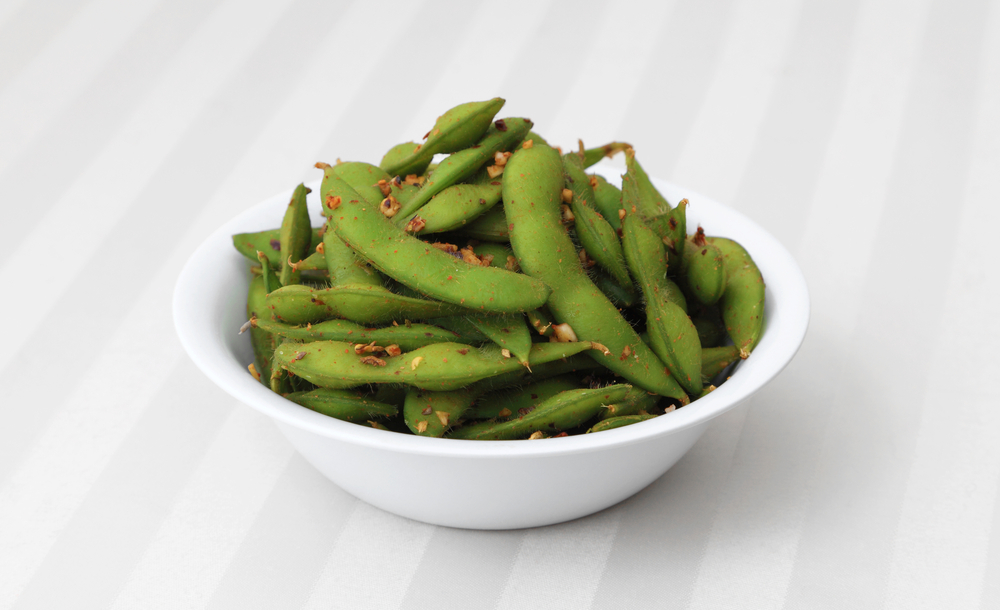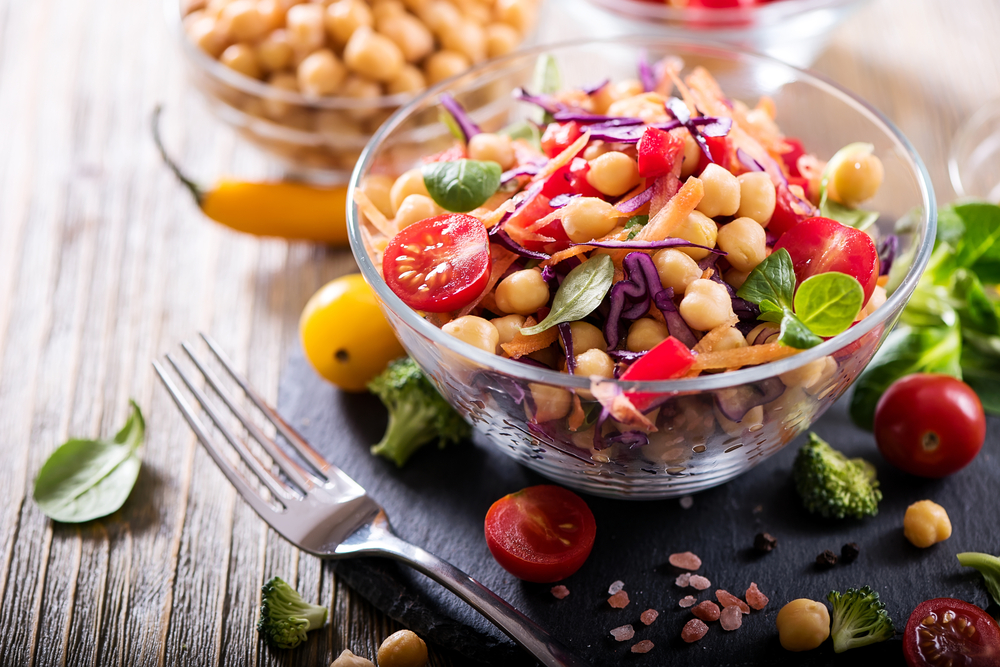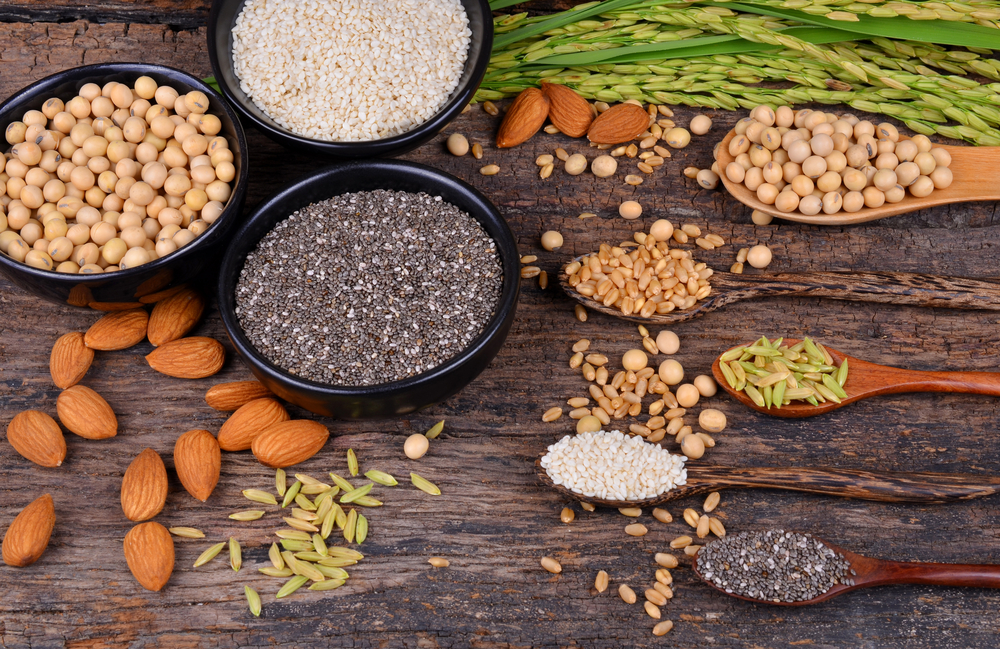Today we’re sharing with you the plant-based foods with the highest levels of protein to help you improve your performance at the gym
Many people believe that vegetarians don’t get enough protein since they don’t eat the main foods that contain all of the essential amino acids: meat and some types of fish. However, this belief is just a myth. There’s a wide variety of plant-based foods that are also a great source of protein.
According to the WHO, an adult should consume between 0.8 g and 1 g of protein per kilogram of weight each day, making it between 10% and 50% of their total daily calories. But other studies have determined that a person who exercises regularly can consume up to 2.5 g per kilogram for men and up to 1.8 g per kilogram for women.
List of protein-rich plant-based foods
Now we’ve looked at the theory, let’s turn to the practical side: which plant-based foods are the best sources of protein? Below is a list of them, with the amount of protein per 100 g and which of these foods offer ‘complete proteins’, meaning those with all the essential amino acids.
-
Soya beans (36 g / 100 g)
Possibly the most abundant plant-based source of protein today is soya, one of the foods most widely studied by doctors, scientists and nutritionists. It is a complete protein (it contains all 9 essential amino acids) with up to 36 g protein per 100 g of soya beans. They can be used in stews (like lentils) or added to a salad. You can also opt for soya products like tofu or soya milk, although the protein content can drop to 5 g per 100 g depending on the characteristics of the product.

-
Hemp seeds (25 g / 100 g)
Hemp seeds contain less protein than soya beans, but they have more fibre, iron and phosphorus, in addition to being easier to digest and having all the essential amino acids. They can be eaten whole (added to bread or biscuits), ground up (in salads, soups or pasta) or as a flour to make bread, cakes or veggie burgers.
-
Nuts (between 15 g and 26 g / 100 g)
Peanuts have more protein than any other nut (26 g /100 g), followed by almonds, walnuts and pistachios (20 g/100 g), cashews (18 g/100 g) and hazelnuts (15 g/100 g). However, these are the most caloric protein-rich foods, as they are high in fat, with more than 600 calories per 100 g in the case of almonds. As they don’t have all the essential amino acids, you can eat them with pumpkin seeds, sunflower seeds or flaxseed, among others.
-
Lentils (26 g / 100 g)
This legume has as much protein as some types of nuts or hemp seeds, but it is not complete protein, meaning it doesn’t contain all the amino acids (specifically methionine). However, it can be served with rice, which does have it, whether in the same meal or hours later, for dinner. In any case, lentils on their own are an exceptional food, as they are low in calories, with only 1% fat and a good amount of fibre, iron, zinc and magnesium.
-
White beans (22 g / 100 g)
White beans (also known as navy or haricot beans) are also rich in protein, high in carbohydrates (60 g/100 g) and fibre (24 g/100 g), making them the perfect food for any athlete. They have complete proteins, with all 9 essential amino acids. Certain studies have shown that eating baked beans reduces cholesterol levels and inhibits the growth of cancer cells.
-
Chickpeas (20 g / 100 g)
Food with very similar characteristics to white beans (they both belong to the legumes family), high in carbohydrates (62 g/100 g) and fatty acids that help lower cholesterol levels. It is a very easy food to work with, as you can make purées, stews, salads or combine them with other vegetables, like spinach.

-
Chia seeds (17 g / 100 g)
Chia seeds are considered a superfood, given their nutritional composition and properties. With just one spoonful of chia a day, we get nearly 2 g of protein, as well as adding omega 3 and omega 6 fatty acids, fibre and calcium to our diet. You can eat them raw, add them to purées, yoghurt, rice dishes, vegetables or even try this chia pudding.
-
Quinoa (between 5 g and 15 g / 100 g)
Quinoa is another superfood that is very popular in South America, above all in Peru, where it is considered a holy food. Its protein contains all the essential amino acids (with much higher levels than cereals like wheat, oats, barley and corn). In cooking, quinoa is a highly versatile ingredient similar to rice, which can be used as a main ingredient or a side, for example as the base of a poké bowl or in this recipe for quinoa burgers.
-
Oatmeal (12 g / 100 g)
Oats are one of the most commonly consumed cereals around the world and an ingredient that is easy to incorporate into your breakfasts with milk, yoghurt, or in a smoothie. Of the cereals, oatmeal has the highest level of protein, although it does not have a complete protein profile, which means it should be complemented with seeds and nuts.
-
Seitan (between 20 g and 75 g / 100 g)
Seitan is a food compound made of wheat gluten, which in its traditional preparation can have up to 75 g of protein per 100 g. The products we find in the supermarket, however, tend to have between 20 g and 25 g of protein per 100 g. It is true that it is very low in fat, has no cholesterol and is easy to ingest, but it doesn’t have all the necessary amino acids and is a known allergen. It isn’t an essential part of a vegetarian diet, as you can get all the necessary protein from legumes, seeds and cereals.









What do you think?